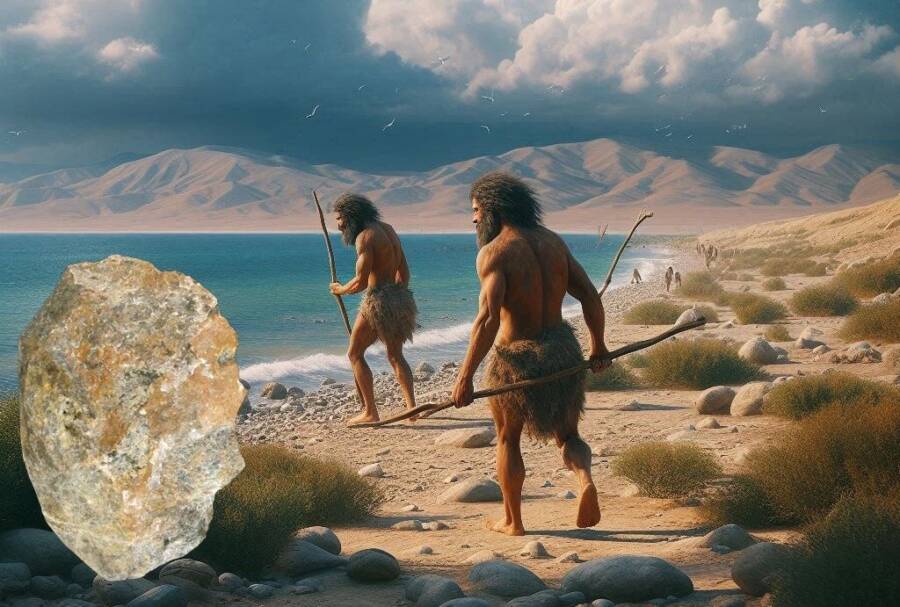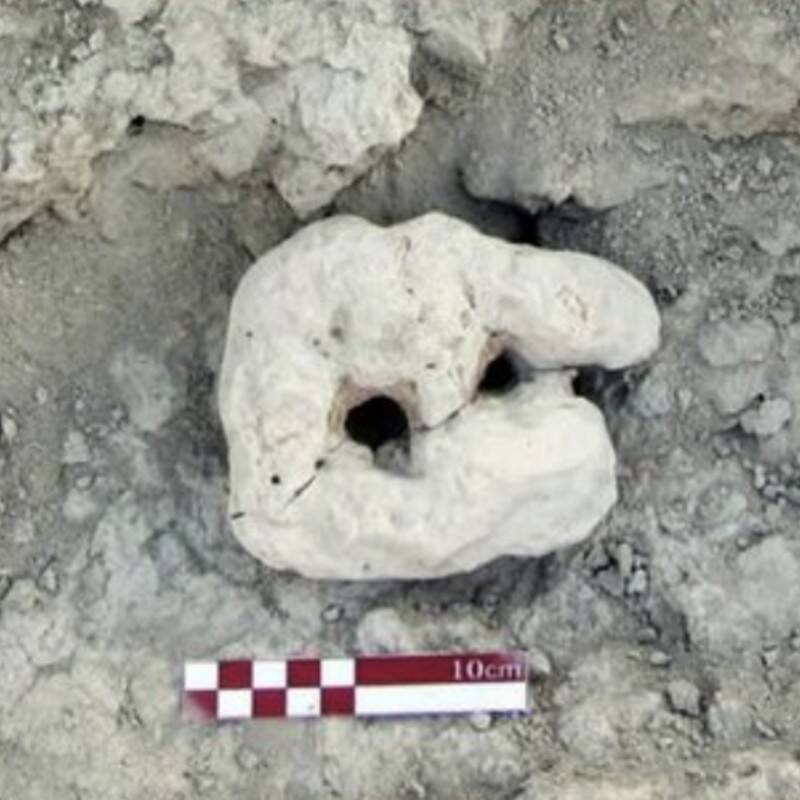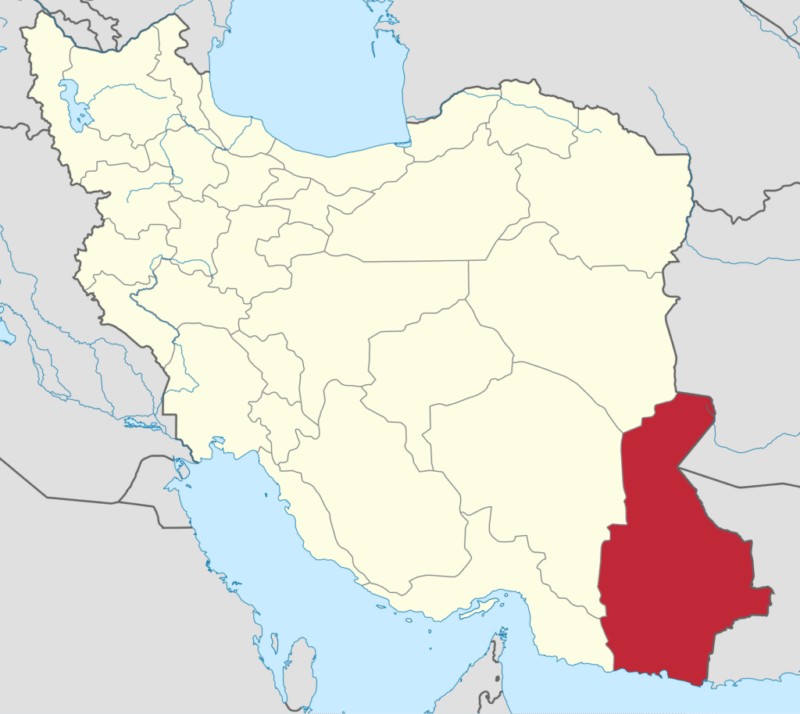Archaeologists found a number of prehistoric fishing tools at a site along the Makran coast on the Sea of Oman, revealing how early humans adapted to their environment.

Morteza Hessari/Tehran TimesA depiction of prehistoric humans along the Makran coast in southeastern Iran.
During excavations ahead of the construction of a new road in southeastern Iran, archaeologists came upon a trove of prehistoric artifacts. Near the Sea of Oman, they uncovered a number of fishing tools, the oldest of which seem to date to the fourth millennium B.C.E.
The tools are a fascinating look back at the prehistoric humans who inhabited the region, but archaeologists are running out of time to investigate the area due to ongoing construction.
The Prehistoric Fishing Site In Iran
According to reporting from Irani News, the prehistoric objects were found at the Kopal site along the Makran coast in southeastern Iran.
Dating back as far as the fourth millennium B.C.E, the hoard of prehistoric objects at the Kopal site consists largely of fishing equipment, including fishing hooks and weights, stone tools, and a collection of shells, animal bones, and pottery shards that offer a look at what prehistoric people in the region ate.
“These discoveries include not only stone tools from the Paleolithic period but also unprecedented evidence of fishing tools such as fishing hooks and net weights,” excavation team leader Morteza Hessari said, “indicating the sustained use of marine resources in this region during prehistoric times.”

Morteza Hessari/Tehran TimesThis prehistoric stone fishing tool is roughly 5,000 years old.
Of all the finds, perhaps the most exciting was a fishing weight unearthed in a trench alongside shells, bones, and pottery shards that dates back roughly 5,000 years. Such a find is an indication of how prehistoric societies interacted with their environment and displays the ingenuity of their tool-making.
“Laboratory studies of these marine remains could provide valuable insights into the aquatic species utilized by the inhabitants of this area during the late prehistoric period,” Hessari remarked.
But, he warned, archaeologists are also running out of time.
A Site In Danger Of Disappearing
According to Hessari, the excavations at the Kopal site were completed ahead of work on a new road, which may permanently damage the site.
“Unfortunately, the Kopal site is at risk of destruction due to the construction of a new road,” he explained. “For this reason, salvage excavations were launched under the framework of research projects by the Cultural Heritage and Tourism Research Institute to salvage part of this endangered heritage.”
But though modern development poses a threat to the prehistoric site, Hessari is hopeful that it can be preserved — perhaps through the construction of a cultural and heritage studies center.

Public DomainThe location of the Makran coast in southeastern Iran.
“We hope that the continuation of such research will pave the way for the establishment of a Makran Cultural Heritage Studies Center,” Hessari remarked. “This center could serve as a hub for investigating and preserving this region’s unique heritage.”
Indeed, the Makran coast has a long history. A semi-arid strip along the shore of the Sea of Oman, the coast was long a cradle of civilization as well as an important cultural waypoint and an axis of trade routes.
As such, the collection of tools found at the Kopal site offers a look back at how this region developed — how people hunted, lived, and ate, and how they adjusted to life on the coast. The fishing and stone tools show how they thought and how they crafted objects suited to their environment.
After reading about the prehistoric fishing tools discovered in Iran, look through this collection of stunning photos of the Iranian Revolution. Or, discover the curious story of the Hasanlu Lovers, the pair of intertwined skeletons that were discovered in Iran and who seemingly died in each others’ arms.





